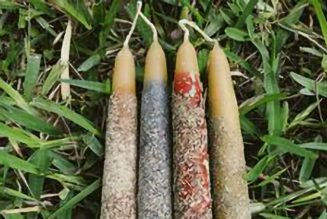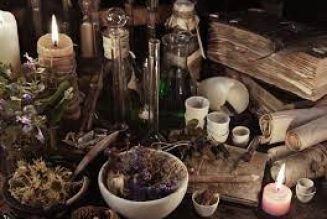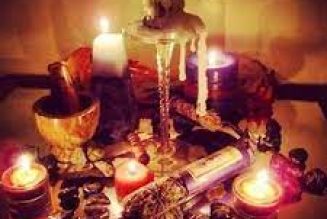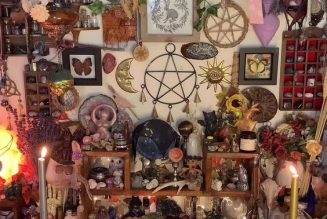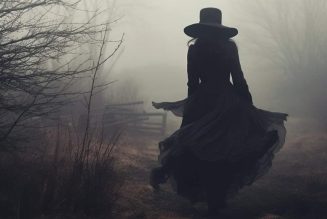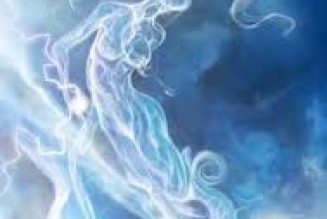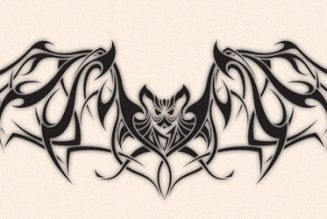An old, ugly woman believed to be a witch or sorceress;
also, a supernatural, demonic being whose powers
enable her to live an incredibly long time.
The origin of the term “hag” is found in the ancient
Goddess beliefs and myths of the Egyptians, Greeks,
Celts and pagan Europeans. The Egyptian heq was a
matriarchal ruler in predynastic times, one who commanded
the names of power. Many Celtic myths feature
Gráinne, or “ugliness,” the Old and Undying Hag.
In Greek mythology, the hag is personified by Hecate,
goddess of witchcraft and crossroads; in Norse mythology
she is the death-goddess Hel. Old Norse hags may
have been sacrificial priestesses, as evidenced by the
terms hagi, meaning “sacred grove,” haggen, meaning
“to chop to pieces,” and haggis, meaning “hag’s dish,”
a dish comprised of organ meats that is still popular in
Scotland.
In folklore, hags are sometimes benevolent, wise,
beautiful and perpetually young. In Irish and Scottish
lore, good hags help with spinning. Supernatural hags
haunt the Fen country of Great Britain, working in league
with bogeys, spirits of the dead and “creeping horrors” to
bring harm to human beings and their animals. The Cailleach
Bheur of the Highlands is a lean, blue-faced hag, a
supernatural remnant of a Celtic goddess of winter who
is reborn each Samhain (All Hallow’s Eve, October 31)
and turns to stone on Beltane Eve (April 30). The Celts
erected sacred standing stones to her. Black Annis, a bluefaced
cannibal with iron claws and long teeth, lives in a
cave in the Dane Hills. A remnant of the Celtic mother
goddess, Anu, Black Annis eats people and animals. Until
the 18th century, a ritual was performed in which she was
coaxed out of her cave every Easter Monday with a dead
cat soaked in aniseed.
In the 16th century, the term hag was often substituted
for fairy. Fairies were reputed to teach their supernatural
skills to witches, and the two consorted at night
at fairy rings.
In other lore, succubus hags cause nightmares by sitting
on a person’s chest and “riding” them through the
night, sometimes killing them from exhaustion (see
nightmare). Hags can be prevented from riding by the
placement of a pen-knife on one’s breast or a table fork
under one’s head. A sifter placed under the head also
prevents riding, for the hag is forced to pass through every
hole in it, which takes her all night. Witch-hags are
believed to sneak into stables at night and steal horses,
riding them all night and returning them sweaty and exhausted.
To prevent this, charms and amulets are hung
in stables.
The term hag in relation to witches is still used in
Great Britain: hag stones mark magic circles, and hag
tracking is a means of cursing.
Modern Witches consider the term uncomplimentary,
a stereotype of an ugly, disagreeable woman.
